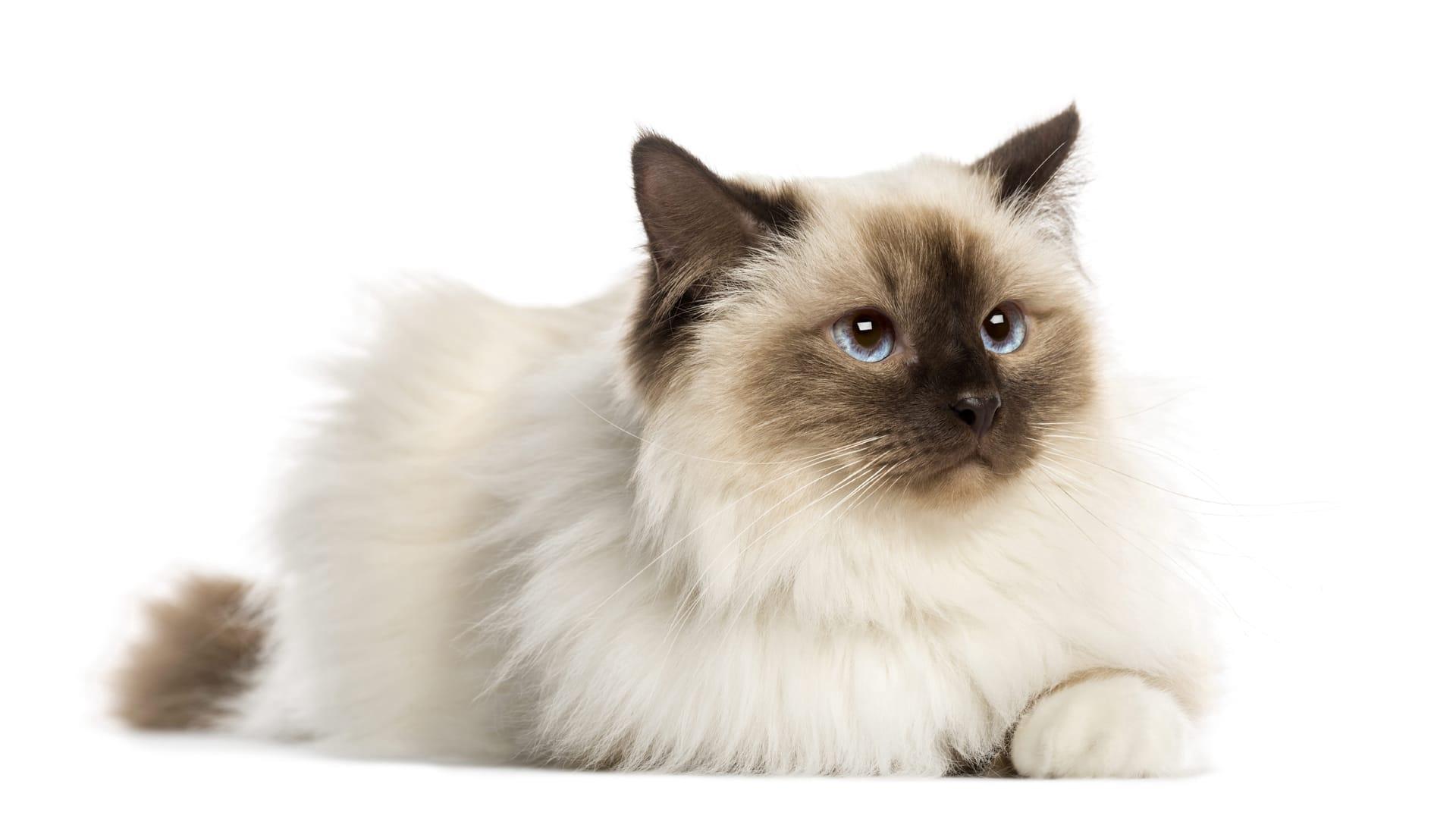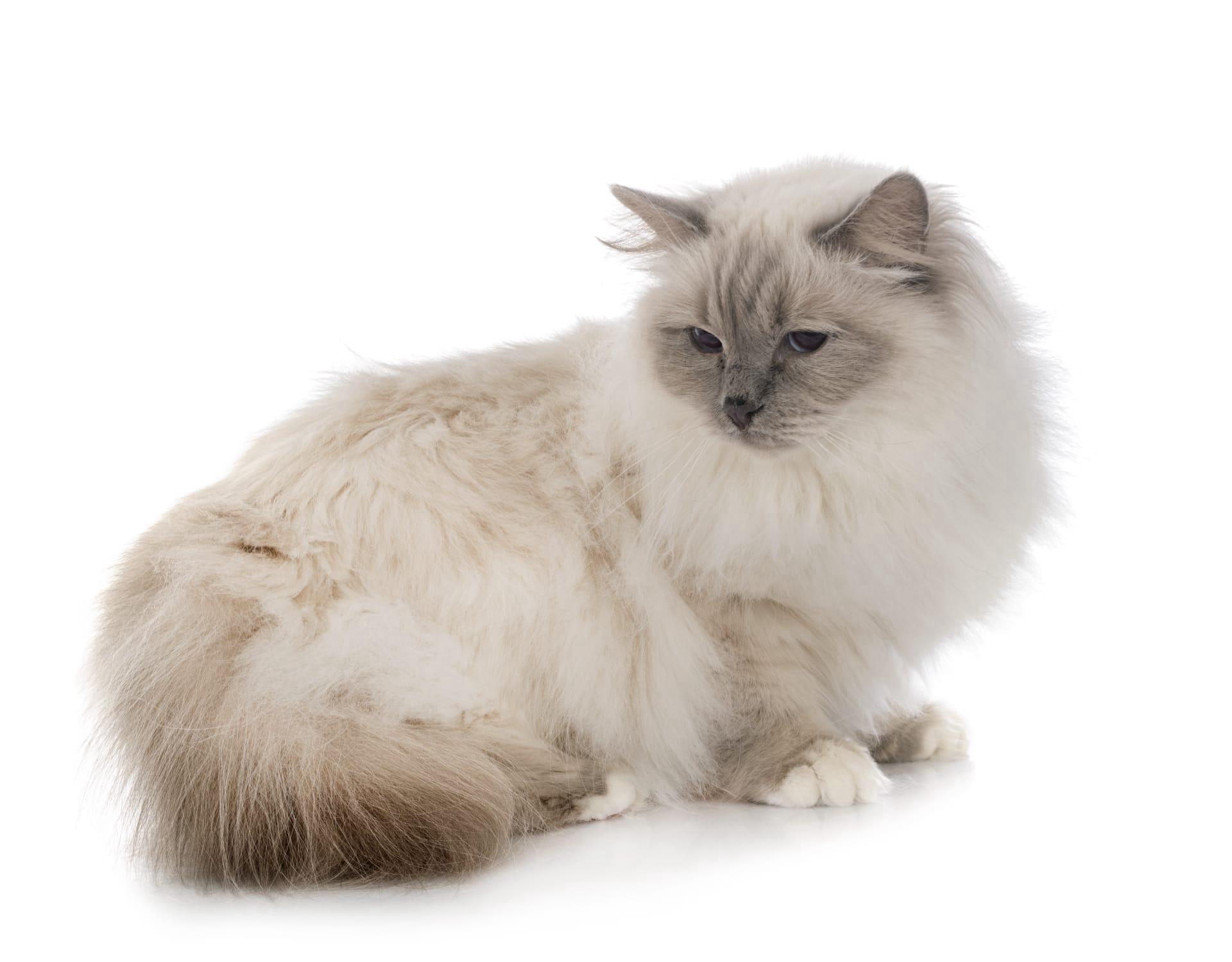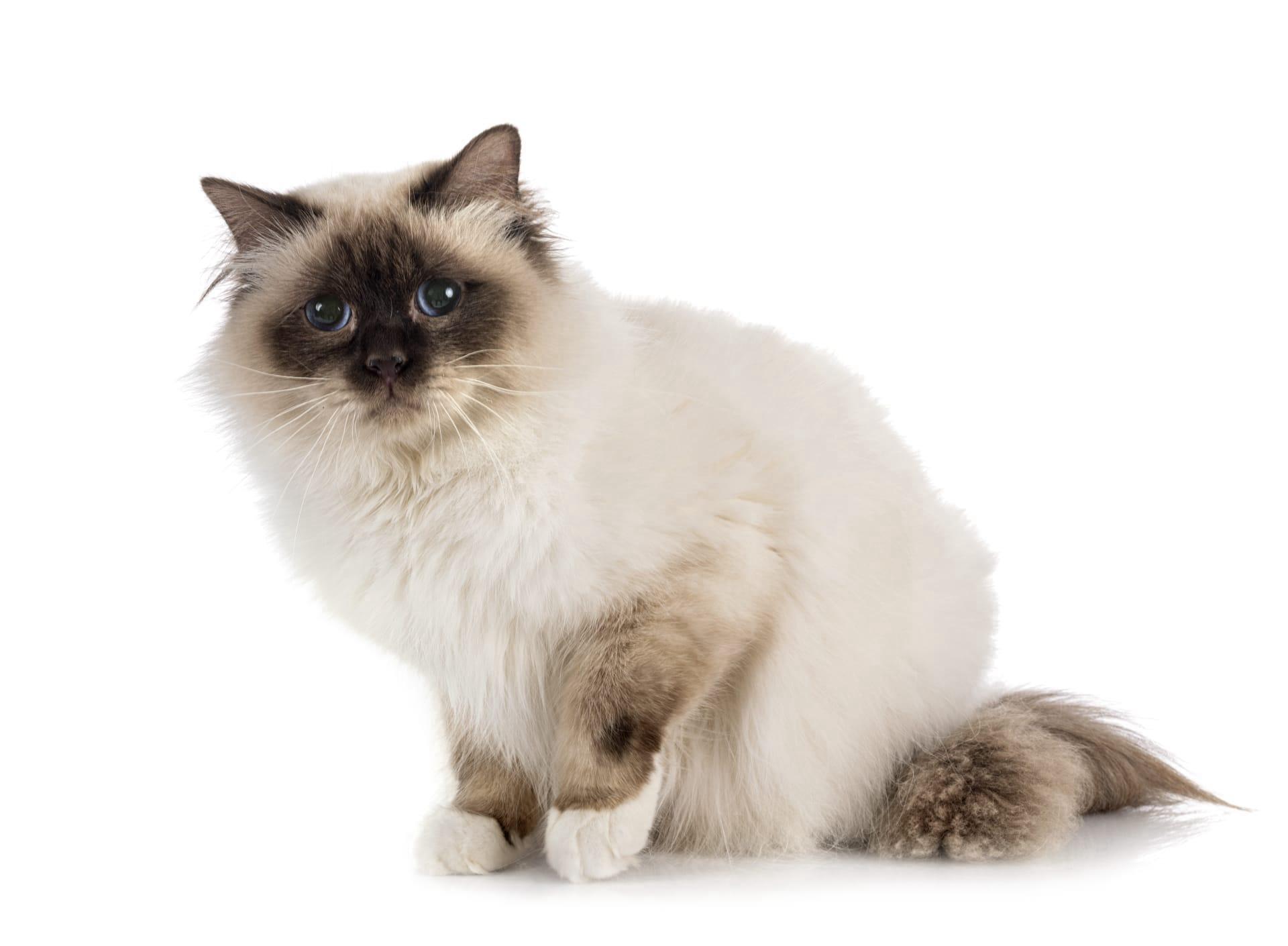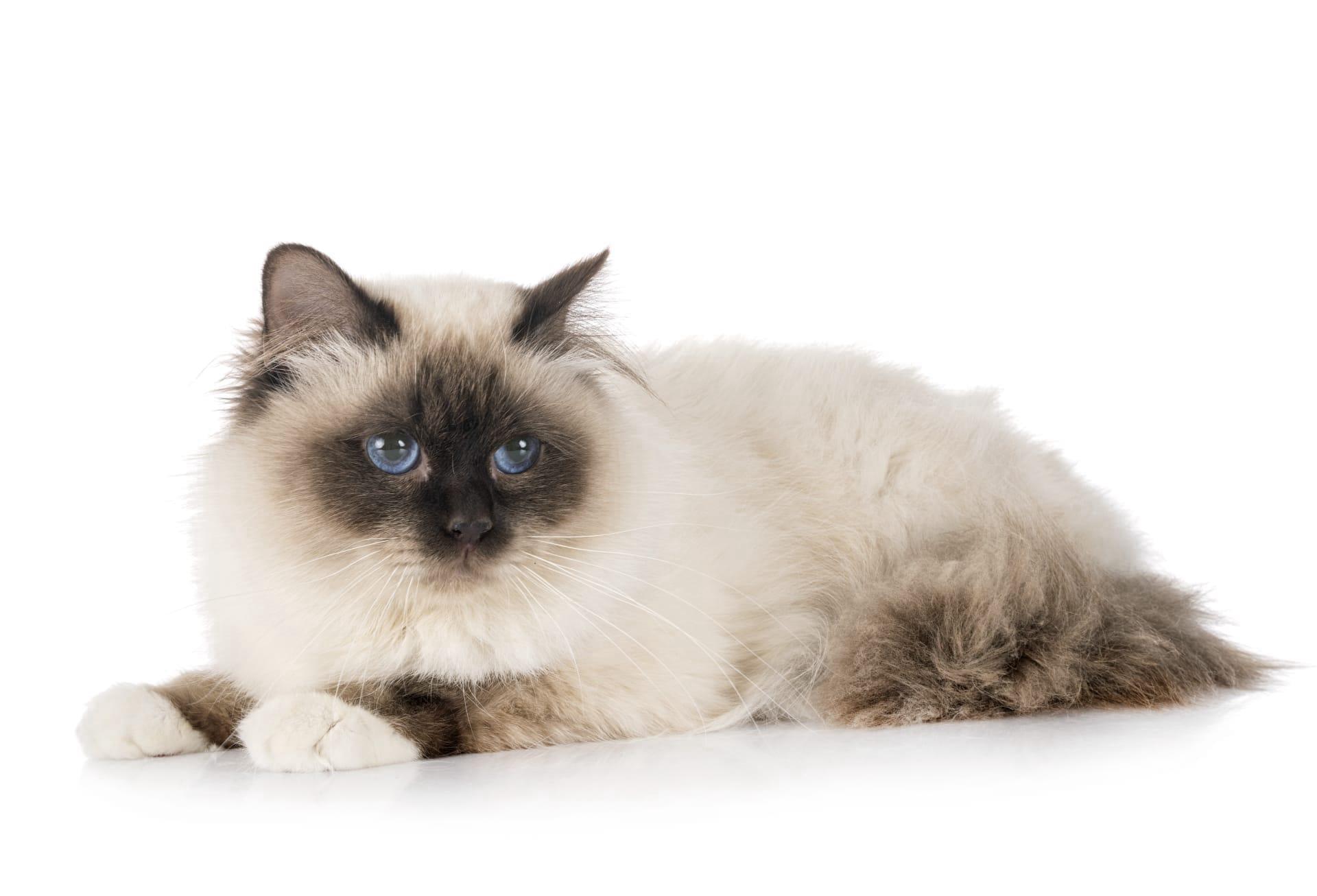1
The Birman Cat, with its distinctive silky coat, deep blue eyes, and contrasting white "gloves" on each paw, embodies elegance and mystery. Originating from Burma (Myanmar), legend has it that these cats were the sacred companions of the Kittah priests in temples. Their striking appearance isn't just for show; it's deeply tied to their history. The silky texture of their coat, which doesn't mat easily, is a result of selective breeding and adaptation to various climates, providing both beauty and practicality. This unique fur requires minimal grooming compared to other long-haired breeds, making Birmans an ideal pet for those who admire long-haired cats but face time constraints.
Birman Cats carry a genetic mutation responsible for their signature white "gloves." This feature is so prized and unique that it's a key aspect of the breed standard in cat shows. However, achieving the perfect symmetry and length of gloves for competition is a rare and sought-after trait, often leading to Birman kittens being assessed for show potential from a very young age. These white markings are not just aesthetic; they are a testament to the breed's purity and lineage, tracing back to the original temple cats. The contrast between the gloves and the rich colors of the coat highlights the Birman's majestic presence, making each cat a living piece of art.

2
Birmans are known for their exceptional temperament, blending the best of both worlds: the playful curiosity of a kitten and the serene loyalty of a mature cat. They develop strong bonds with their human families and possess a gentle, social nature that makes them excellent companions, even in homes with children and other pets. This adaptability stems from their history as temple cats, where they were accustomed to the presence of many people and animals. Their calm demeanor is coupled with a playful side, often showing in bursts of energy and mischief, making them an entertaining and affectionate addition to any household.
Another fascinating aspect of Birman Cats is their vocalization. Unlike some breeds that are known for being particularly vocal, Birmans strike a balance, expressing themselves in a soft, melodious voice when they seek attention or communicate with their owners. This trait makes them communicative but not overbearing, capable of engaging in "conversations" with their humans without the persistent loudness found in other breeds. Their vocal sounds can range from soft chirps to gentle meows, indicating their contentment, curiosity, or even their polite requests for meals or cuddles, further emphasizing their sociable and loving nature.

3
The color point pattern of Birman Cats, similar to that of Siamese cats, undergoes a fascinating transformation from birth. All Birmans are born pure white, and their distinctive color points (ears, face, tail, and legs) develop as they age, influenced by temperature. This genetic trait, known as temperature-sensitive albinism, means that the cooler parts of their body display the color, while the warmer areas remain light. The final color, which can range from seal, blue, chocolate, to lilac, among others, takes up to two years to fully develop, making each Birman's journey to maturity a unique spectacle.
Birmans have a surprisingly robust health profile, often living into their late teens with proper care. This longevity is attributed to the breed's relatively diverse genetic pool and responsible breeding practices that prioritize health over aesthetics. Common health checks for Birmans include screening for hypertrophic cardiomyopathy (HCM), a heart condition, and kidney issues. However, their strong genetic lineage helps mitigate the prevalence of such conditions, making the Birman not only a beautiful and sociable companion but also a resilient one. Regular vet check-ups and a healthy lifestyle can ensure these cats share a long and happy life with their families.

4
The Birman's intelligence and trainability are often underrated. These cats have a keen ability to learn tricks, solve puzzles, and even master the use of a litter box with remarkable ease, showcasing their adaptability and cleverness. Their intelligent nature makes them responsive to training, capable of understanding commands and routines, which, combined with their desire to please their owners, makes them surprisingly easy to train for a cat. Activities that stimulate their intellect, such as interactive toys or teaching them new tricks, not only provide entertainment but also strengthen the bond between Birmans and their owners.
The breed's history is as rich and mystical as its appearance. According to legend, the Birman Cat was created through divine intervention. The story goes that the goddess of Burma transformed a temple cat's white fur to golden, and its eyes to sapphire blue, to resemble the goddess herself, while the paws remained white as a symbol of purity. This transformation was said to reward the cat's loyalty and the priest's devotion. While this legend adds to the breed's allure, it also symbolizes the Birman's revered status and the deep spiritual connection these cats have historically held with their human companions.

5
Birman Cats have a unique seasonal shedding pattern that sets them apart from other breeds. Unlike many long-haired cats that shed consistently throughout the year, Birmans experience a more pronounced shedding season in the spring. During this time, they shed their winter coat, which can result in a significant amount of hair loss. This seasonal shedding helps them adjust to warmer temperatures, maintaining their comfort and the health of their coat. However, outside of this shedding season, Birmans are relatively low shedders compared to other breeds, making them a manageable choice for pet owners concerned about fur in their homes.
The Birman breed's resilience and adaptability can be traced back to its origins. Surviving the perilous journey from Burma to France in the 1920s, the Birman breed nearly faced extinction during World War II, with only two surviving individuals. Through careful and dedicated breeding efforts, the breed was revived and diversified, leading to the robust and healthy population we see today. This remarkable comeback story not only highlights the breed's resilience but also the dedication of breeders and enthusiasts to preserving the Birman's legacy. This history of survival adds a layer of depth to the breed's character, embodying a spirit of endurance and revival that makes the Birman cat an even more fascinating companion.